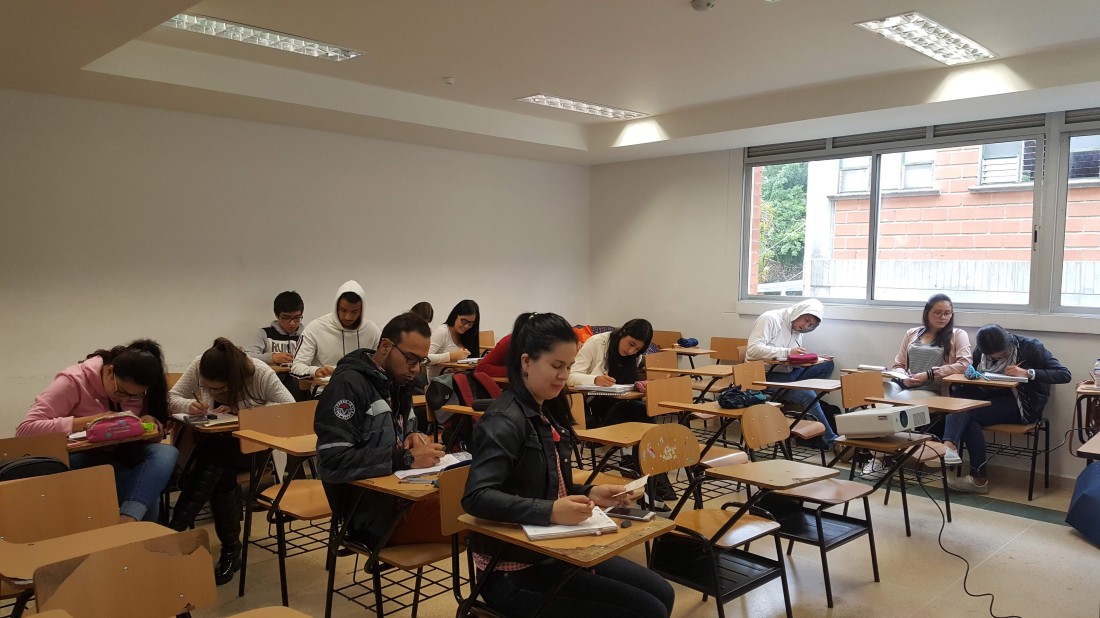It´s funny how staying in for eight days straight can give you stuff to write about. My trip to Jardín last weekend seems like a lifetime away. Gone temporarily are the days when one could jump in the car on a Saturday morning and set off on a road trip with two mates, drink some beers, eat some local trout, then cool off in a charco etc. It´s amazing how quickly one comes to recognise the simple beauty and privilege in having the freedom to do all these things.
Things have ramped up in both Colombia and the UK this week, although the situation doesn´t feel so desperate here, yet. The local government has acted quickly, in first imposing a curfew and then a local collective quarantine. Even when President Duque attempted to cancel all local quarantine laws, the Mayors of Oriente united to defy the main man in an act which was widely applauded. At least by the people in my social media circle, which obviously reflects widespread public opinion. Nevertheless, Duque quickly followed in announcing a nationwide lockdown, which is due to start at midnight on Tuesday/Wednesday, with our local quarantine being extended to coincide with the start of Duque´s. So, as it stands, with Sophia now having left for the US, it will be an entire month of me knocking around in the apartment, on my own. I´ll even spend my birthday in complete isolation. When my brothers used to joke that I should hold my birthday party in a phone box, I didn´t ever think the punchline would ever come this close to fruition!
Alas, isolation hasn´t been so bad thus far. Firstly, I have been able to buy enough food to last me for a couple of weeks. Shelves don´t seem to be emptying at the same rate as they are in the UK. And, yes, I have toilet roll. In addition to this, local government across the country has introduced a policy whereby only people with ID cards that end in a given number can shop for food on certain days. The logic and common sense of such a policy is a breath of fresh air and will hopefully result in a more adult and mature way of procuring what each family needs for the lockdown.
Another fringe-benefit of being in isolation is the time it has given me and friends to catch up. Indeed, this weekend, I´ve had not one, not two but three house parties, which have involved rounds of pictionary, articulate, trivia and piano playing. My life has never been this exciting! I am, of course, referring to the House Party app as opposed to an actual house party. I´m not a complete wally.
The community here has come together, too. Two ex-students gave me a bundle of tropical fruit before heading to the coast to be with loved ones; my neighbour, to whom I donated some of the lemons from the aforementioned fruit package, has text me every day with updates from the local government; my landlady has rang me numerous times instructing me not to starve and to let her know if I need anything. And, every night so far, at 8pm, many residents have ventured out on to their balconies to clap, sing or generally hacer bulla. It´s amazing how quickly one adapts and comes to cherish these fleeting but shining moments of humanity and solidarity.
No one really knows how long this is going to go on for, since most of us have never lived through anything vaguely comparable. We do know that there are some tough times ahead, though. No doubt it will get worse before it will get better. Yet, I hope we are at least on the right path now. After months of espousing the view that ´it´s just flu´ (a view to which I also subscribed), ´it won´t affect me´, ´people are fear-mongering´, the experts´ view does seem to be gaining traction at least. Even though it may have taken central government intervention, people will hopefully now take heed.
I consider myself very lucky to be able to merely stay at home, work and still receive a salary (until the end of May). I´ve been trying to support some of the local businesses that I love here, through ordering home deliveries but I know they face very tough times ahead. And, it goes without saying that the biggest losers in all of this will be those most vulnerable and already in poor health. Cooped up here, I really cannot complain. Staying in is such a drop in the ocean, when compared with what some will go through.
From here on, there will be a direct correlation between my updates becoming more regular and less entertaining, as I have more time on my hands with less to do. However, if I get bored, you, as my ´followers´, are coming with me. I´m praying that, by June/July, flights will be available once more so I can head back home but if there aren´t, that´s ok too. I can wait.






















































































































































